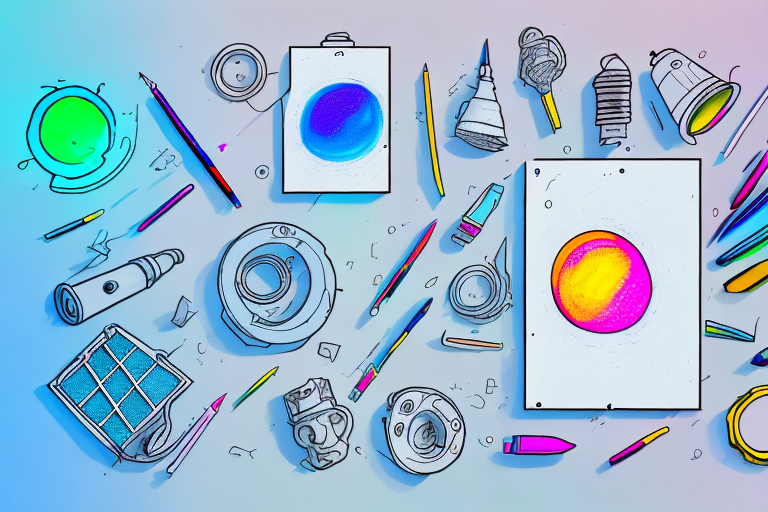Studio lighting is a crucial aspect of any artist’s toolkit. Whether you are a painter, photographer, or any other type of visual artist, having the right lighting setup can greatly enhance your artistic results. In this article, we will explore the importance of studio lighting for artists and provide valuable insights into choosing the best studio lights for your creative endeavors.
Understanding the Importance of Studio Lighting for Artists
Studio lighting plays a vital role in the way your artwork is perceived. It not only illuminates your subject but also sets the mood and creates depth and dimension in your artistic creations. The right lighting can bring out the intricate details, highlight textures, and evoke emotions in your viewers. Without proper lighting, even the most skillfully crafted artwork can fall flat.
Artists rely on studio lights to recreate the desired lighting conditions indoors, especially when working with still life setups or shooting portraits. By controlling the intensity, direction, and color temperature of the light, artists can create stunning visual effects and manipulate the way their subjects are perceived.
Studio lighting equipment typically includes various types of lights, such as strobes, continuous lights, and LED panels. Strobes are powerful flashes of light that provide a burst of illumination, making them ideal for freezing motion and capturing dynamic scenes. Continuous lights, on the other hand, emit a constant light source, allowing artists to see the effects of the lighting in real-time. LED panels are versatile and energy-efficient, providing a soft and even light that is perfect for creating a natural-looking illumination.
Factors to Consider When Choosing Studio Lights for Artists
When selecting studio lights for your artistic projects, there are several important factors to consider:
- Lighting Type: There are various types of studio lights available, including continuous lights and strobes. Continuous lights provide a constant light source, making them ideal for still life and video work. Strobes, on the other hand, deliver short bursts of intense light, perfect for freezing motion in photography.
- Power and Control: Consider the power output and adjustability of the studio lights. Having the ability to control the intensity and direction of the light will give you more flexibility in achieving your desired artistic vision.
- Color Accuracy: Look for studio lights that offer high color rendering index (CRI) to ensure accurate color reproduction in your artwork. The CRI measures a light source’s ability to render colors faithfully, and a higher CRI value signifies better color accuracy.
- Light Modifiers: Evaluate the availability of light modifiers such as softboxes, umbrellas, and reflectors. These accessories allow you to shape and diffuse the light, providing greater control over shadows and highlights in your artwork.
- Budget: Consider your budget constraints and find studio lights that offer a balance between affordability and quality. It is essential to invest in reliable and durable equipment that will withstand the rigors of your artistic practice.
Light Temperature: Another important factor to consider when choosing studio lights is the light temperature. Different light sources emit light at different temperatures, measured in Kelvin (K). The light temperature can greatly affect the mood and atmosphere of your artwork. For example, warmer temperatures (around 2700K-3000K) create a cozy and intimate feel, while cooler temperatures (around 5000K-6500K) produce a brighter and more energetic ambiance. Consider the desired emotional impact of your artwork and select studio lights with the appropriate light temperature to enhance your artistic vision.
Different Types of Studio Lights and Their Benefits for Artists
There are several types of studio lights available, each with its own benefits for artists:
- LED Lights: LED lights have gained popularity in recent years due to their energy efficiency, long lifespan, and versatility. They emit a continuous light source and can offer a wide range of color temperatures, making them suitable for various artistic applications.
- Fluorescent Lights: Fluorescent lights are known for their high color accuracy, making them ideal for artists who require precise color reproduction. They produce a soft, even light and are relatively more affordable compared to other options.
- Halogen Lights: Halogen lights deliver a warm, intense light and are commonly used for their ability to create dramatic lighting effects. However, they tend to generate heat and consume more energy compared to LED or fluorescent lights.
- Incandescent Lights: Incandescent lights produce a warm, soft light that can impart a nostalgic and cozy feel to your artwork. However, they are less energy-efficient compared to other options and can generate a significant amount of heat.
Natural Light: In addition to artificial studio lights, natural light can also be a valuable resource for artists. Natural light provides a unique and ever-changing lighting environment that can enhance the mood and atmosphere of your artwork. It is especially beneficial for artists working with subjects that require a realistic representation of lighting conditions, such as landscapes or portraits. Additionally, natural light is free and readily available, making it a cost-effective option for artists on a budget. However, it is important to consider the time of day and weather conditions when working with natural light, as they can greatly affect the quality and intensity of the lighting.









